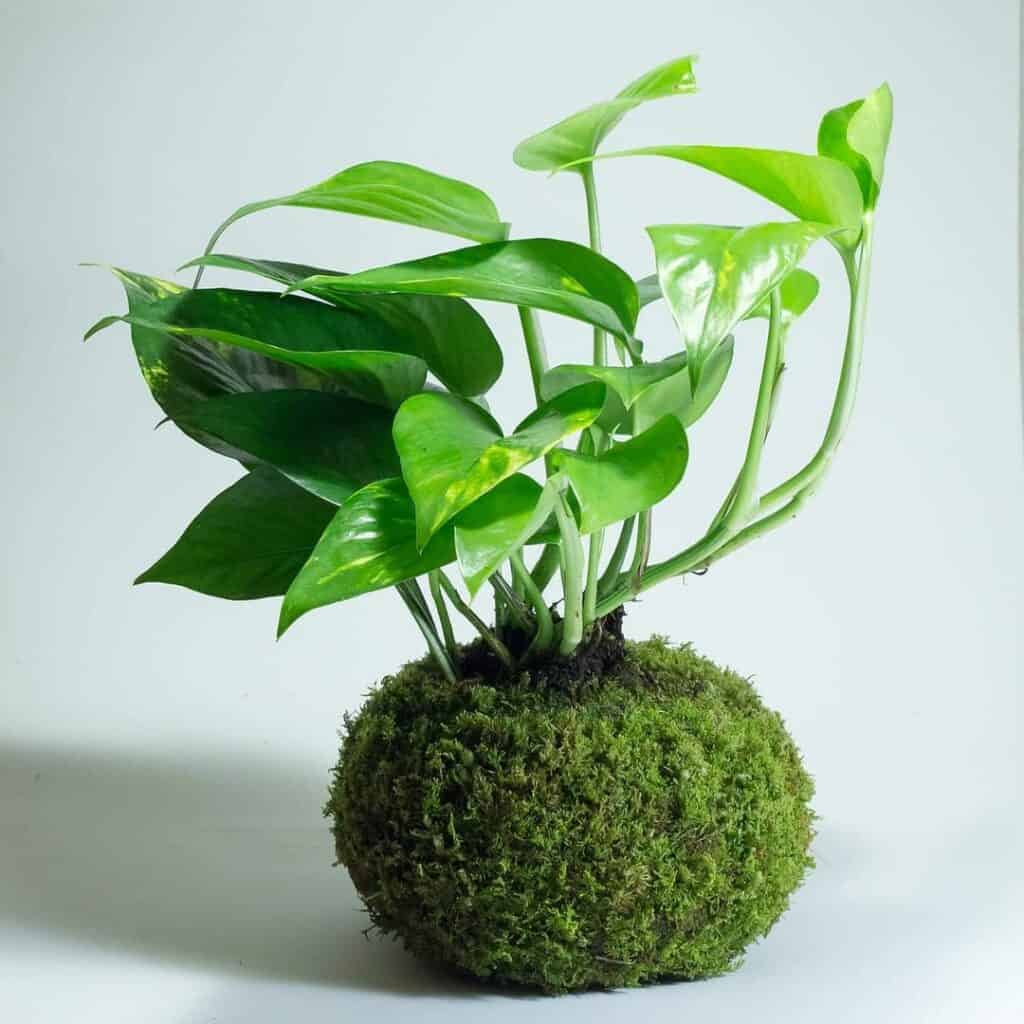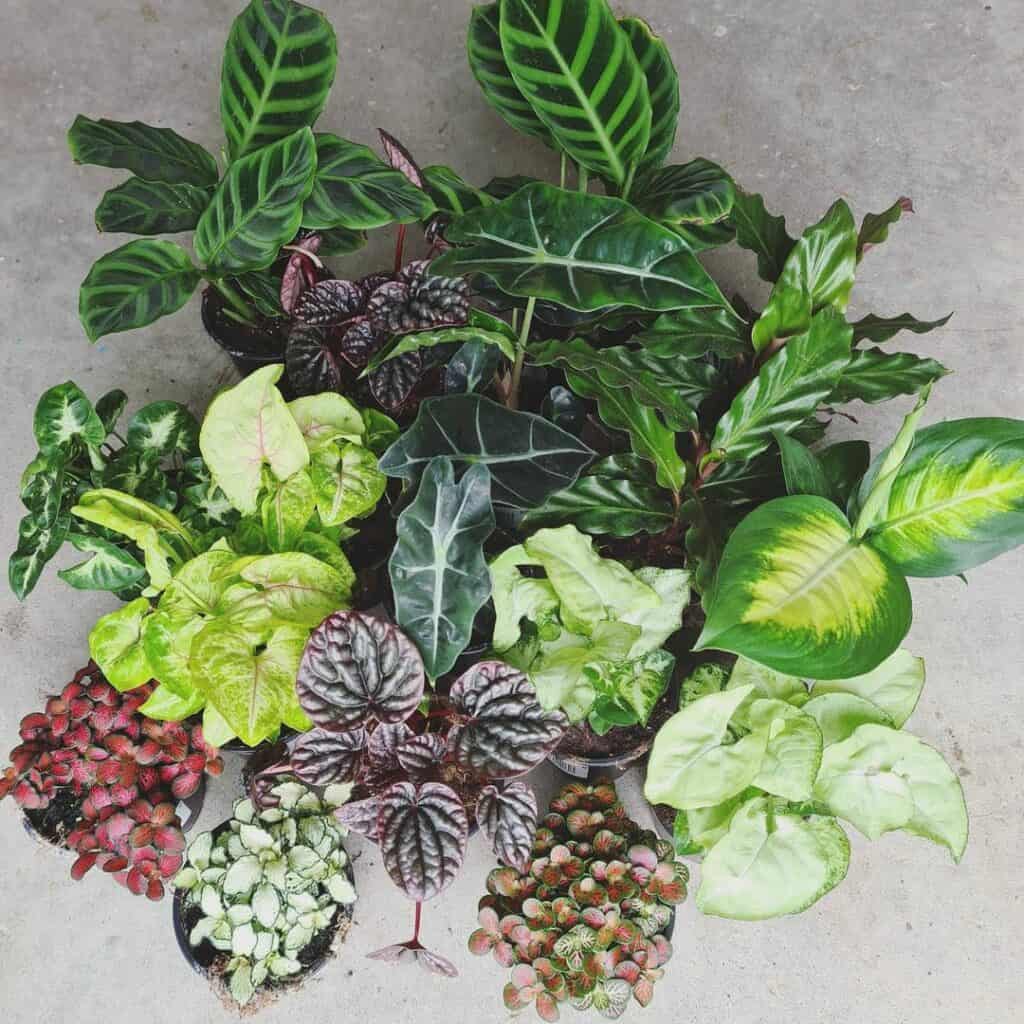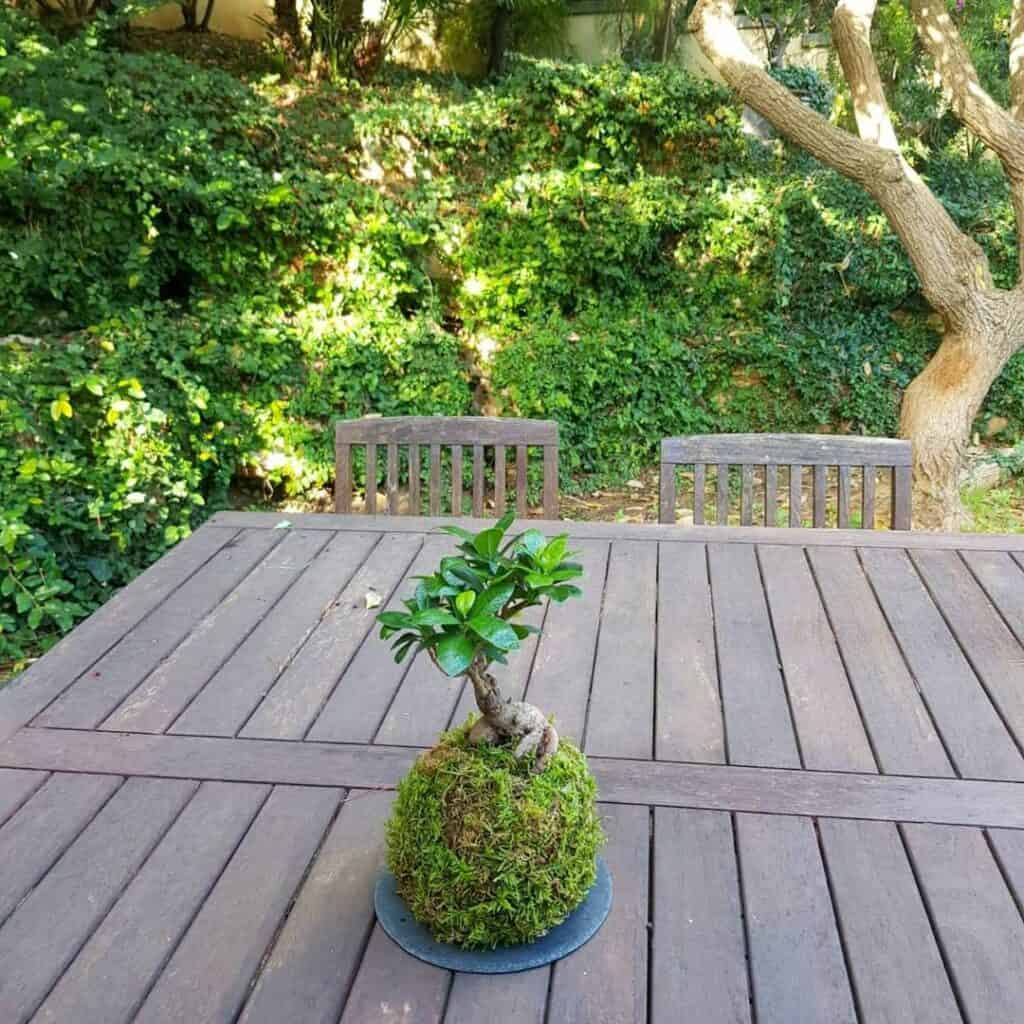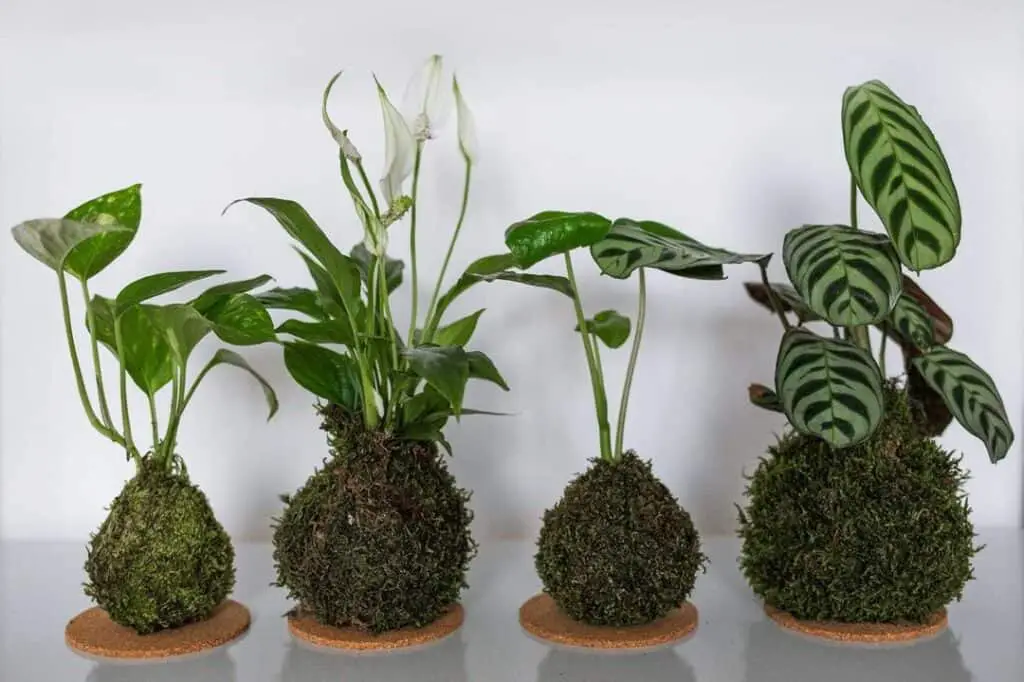If you’re looking for a great way to add some culture and flavor into your home or garden, then Japanese kokedama plants are a great choice. The word kokedama literally means “moss ball,” and it’s truly a form of gardening art! Instead of potting your houseplant in a ceramic pot as you normally would, you’ll plant it inside of a ball of thick soil that’s held together by a layer of moss.
Wondering what the best plants for kokedama are? The best plants for kokedama moss balls are golden pothos, peace lily, and miniature pines. These plants all have a reputation for being able to grow well indoors, don’t need a lot of sunlight, and are relatively low-maintenance.


However, you can use almost any plant as long as it can grow inside of a moss ball and is appropriate for its environment! In today’s article, I’m going to go over how to select the best plants for kokedama as well as give you a list of some of the most commonly used houseplants for this unique Japanese gardening style!
How To Select The Best Plants For Kokedama
Usually, sphagnum moss or hypnum moss is used and holds the root ball together with a network of wires and ties. Apart from looking pretty, the moss accomplishes two important things:
- Insulates the roots.
- Helps the houseplant retain water.
Assuming you’ve already picked out your soil and chosen the type of moss you want to use, your only choice now is to select the plant that you want to grow out of your moss ball.

Creating a moss ball is a work of love and is something that will take a bit of time and energy. It’s supposed to be a meditative experience and is one that incorporates many aspects of ikebana – the Japanese art of flower arrangement and home gardening.
If you have a bit of patience, though, you’ll be able to create a beautiful kokedama moss ball that will be able to last for years as long as you take care of it and ensure that it has proper nutrients and water!
Most kokedama moss balls are designed to be indoor plants, but depending on the plant you choose, you can also hang your kokedama outside. They’re a way of encapsulating the heart and design aspects of traditional Japanese moss gardens.
In the West, we tend to think of moss as a weed or a parasitic plant. However, in Japanese Buddhist culture, it has a lot more significance. It represents longevity, tradition, inner strength, and new growth.
As many cities in Japan have slowly developed into urban supercenters, these expansive outdoor moss gardens have started to become a “thing of the past.” Kokedama represents an effort to preserve the spiritual significance of moss into a small plant that can be placed in the home as a constant reminder of beauty and harmony in nature.
Important Factors To Consider
As we mentioned, you can use a wide variety of different houseplants (or even outside plants) in your moss ball. If you want your kokedama to last a while, then you’ll want to start by selecting a plant that blooms year-round.
Although it can be tempting to use those pretty semi-annual flowers, you’ll be left with a dead-looking kokedama for the seasons where the plant is not in bloom.
In addition to this, here are some other important factors to consider when choosing a plant for your project.
Indoor Vs. Outdoor Plants

Most kokedama moss ball projects are created using indoor houseplants. However, you may also use outdoor plants if you plan on keeping your moss ball outside on the porch or in your garden.
Indoor plants are designed to survive with minimal sunlight, tend to be very hardy, and also grow year-round. Additionally, indoor plants tend to have smaller root structures and take up less space, allowing them to easily grow in a confined root ball. This makes them an obvious choice for kokedama.
If you choose to use an outdoor plant instead, then you may need to do a bit more research to find a plant that doesn’t grow large roots and will grow well in a more confined environment. Outdoor plants typically tend to grow deep roots in order to protect themselves from strong winds or animals that may try to uproot them from the safety of the ground.
Shade Vs. Sun Plants For Kokedama
Although some types of moss are able to grow in direct sunlight, sphagnum moss (the type most commonly used to create moss balls) does not like direct sunlight. The whole idea of kokedama is to create a symbiotic system where both the plant and the moss can thrive together.
This means that you’ll want to choose a plant that grows well in the shade or with partial-sunlight.
Root Structure And Depth
Most indoor houseplants don’t grow roots as deep as outdoor plants. As long as you’re selecting an indoor plant, you usually won’t have to worry about this. Just make sure that the plant you choose doesn’t need a lot of soil depth, as you’ll only be able to provide it with a few inches of surrounding soil.
The Best Plants For Kokedama

Here are four of the most common plants used to create kokedama moss balls. They are all plants that grow well indoors, need limited (if any) sunlight, and don’t require a lot of space to grow roots.
Golden Pothos
Golden pothos is a leafy plant that grows in a vine-like fashion. The leaves are heart-shaped and are typically emerald green with golden spots and stripes. In addition to looking beautiful, they’re also one of the best plants for purifying the air in your home and require very little care as long as they have plenty of water.
Peace Lily
The peace lily is a relatively easy houseplant to grow and requires very little care as long as you keep it in a mild temperature environment. They grow long dark green leaves and occasionally produce a couple of bright white lily flowers.
Norfolk Pine
In the wild, norfolk pines can easily grow up to 100-feet tall and are one of the strongest, most durable trees in the world. However, you can use small seeds or cuttings to grow miniature pines. Of course, they will eventually outgrow your moss ball and need a larger space, but until they do, you’ll have a beautiful pine tree that resembles a Japanese bonsai tree!
